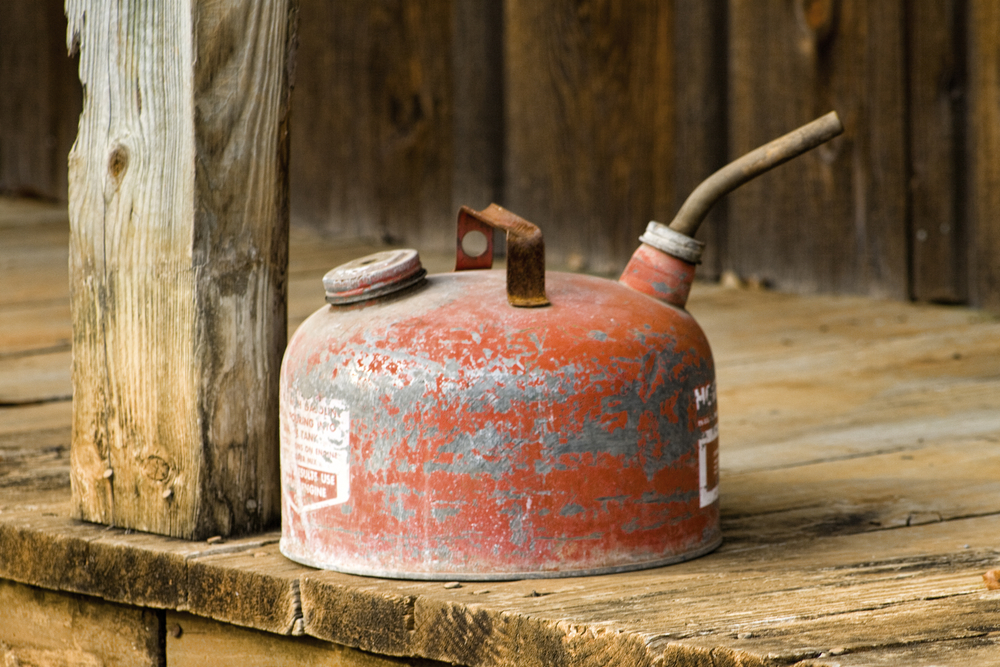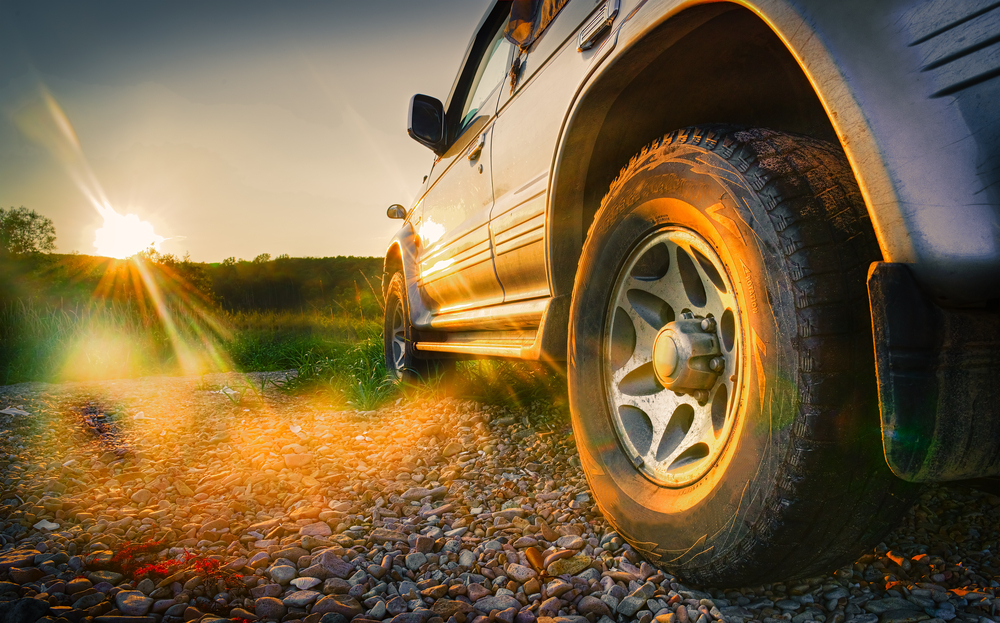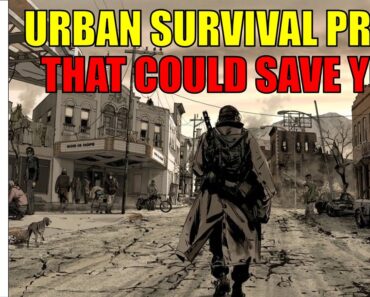One of the biggest things that break our suspension of disbelief when we’re watching post-apocalyptic shows like “The Walking Dead” is the fact that they can start cars that have been sitting for years without any trouble. Once they hot-wire these vehicles — because, of course, there are no keys to be found — the engines start up without so much as a cough from the exhaust. It’s a great writing tool to further the plot, but for anyone who knows anything about cars, it’s entirely unrealistic.
Transportation in a SHTF scenario will depend on a lot of different factors. Some of these things you can control, while others might sneak up on you. How long will your car last if you need to get around after the world ends? What variables can you prepare for to keep them from throwing a wrench in the works, and how can you realistically make your vehicle last as long as possible after the world as we know it comes to an end?
Choosing Your SHTF Vehicle
The first step in estimating how long your vehicle might last in a survival scenario is to choose the best car or truck for the job. It’s tempting to picture yourself driving around a desolate wasteland in the sports car of your dreams, but while it might look cool, it isn’t practical. The precise criteria you look for in a SHTF vehicle will vary depending on:
- The number of people you need to transport
- The amount of cargo you need to carry
- Availability in your area
- Your survivalist prep budget
- Whether you’re planning to live out of this vehicle or use it for transportation
- Where your survival shelter is located
- The year-round climate in the area around your survival shelter
- The type of fuel the car uses
This list might seem like a lot to consider, but it’s not comprehensive. Choosing the best bugout vehicle for your prepper plans is a topic for another time. For the sake of argument, let’s assume you’ve chosen the best possible SHTF car for your needs. There are still plenty of things you need to consider when determining how long it might last once things start to go pear-shaped.
Variables to Consider
Taking your bugout vehicle to the shop if something breaks down probably won’t be an option in a survival situation. Here are some factors that might impact your car’s life span and how you can overcome them to stay mobile in the apocalypse.
1. Fuel Availability
Fuel will be one of the biggest challenges to overcome in a SHTF scenario. Gasoline-powered vehicles account for more than 50% of new cars, with diesel engines only making up about 30%. Unfortunately, gasoline will likely become hard to find in a survival situation. Diesel vehicles are a better option because converting them to biodiesel is easy, and it is possible to manufacture this fuel on your own.
Battery-powered electric cars might seem like a good alternative, but they are only viable if you have an off-grid power source. Otherwise, once the grid collapses, these eco-friendly vehicles become overpriced paperweights because you’ll have no way to recharge them.

2. Mileage
Buying a used vehicle might be a great way to cut costs, especially if you’re prepping on a budget, but make sure you’re paying close attention to the mileage before you sign on the dotted line. The more miles a car or truck has traveled, the more wear and tear it has experienced and the more likely breakdowns become.
The only exception to this rule might be older vehicles that are easy to repair and find replacement parts for. In this case, those two criteria might outweigh a bit of extra baggage in the mileage department.
3. Batteries and Charging
Are you expecting things to go back to some semblance of normal after a SHTF scenario, or is this the end-of-the-world-as-we-know-it situation where normality is never going to be an option again? Even if you’re not driving an electric vehicle, you still need to worry about its battery health. The average automotive battery will only last three to five years before needing replacement. Even under the best circumstances, you’ve only got five years before you’ll need to find a new one.
There’s no perfect solution for dealing with battery life. A car battery can sit unused for two to four years as long as you take the time to store and maintain it properly. Keep it upright, place it in a well-ventilated area and protect it from temperature extremes. If you have access to off-grid power, a trickle charger can maintain your batteries when they aren’t in use.
4. Access to Parts
Right now, if something on your vehicle breaks, you can head to your favorite shop or auto parts store. This won’t be an option during a SHTF scenario, so you’ll need to find alternatives to secure replacement parts. The best way to avoid this problem is to choose a common make and model, preferably domestic. That way, if things start to fall apart and you find yourself needing parts, you’ll be able to find abandoned cars you can salvage. Common models are always easier to find in a junkyard.
5. Car Repair Skills
Speaking of finding parts and DIY repair projects, how are your car repair skills? Learning how to fix your vehicle is probably the most important skill you’ll learn as part of your survivalist arsenal. You might not want to try rebuilding an engine from scratch in an apocalypse, but being able to replace broken parts and maintain the vehicle well enough to keep it running can go a long way toward keeping you mobile.
Start practicing today by maintaining your daily driver. Learn how to check and change your oil, replace filters, and perform other basic maintenance tasks. Once you feel comfortable with those, move on to more complex repairs and modifications. The better you understand the inner workings of your vehicle, the easier it will be to diagnose problems and repair them if going to the shop isn’t an option.
6. Off-Roading Capabilities
Tooling around in a tricked-out sports car might seem like a great way to spend the apocalypse, but it’s not practical when it comes to things like off-roading. Maybe your survival shelter is well off the beaten path, or perhaps you’ll have to venture off the highway to avoid abandoned vehicles. Whatever the case, you’ll want to consider whether your ride has the kind of off-roading capabilities you’ll need to navigate in a survival situation.
You don’t necessarily need the fanciest gear or a heavily modded Jeep capable of climbing boulders at close to 90 degrees. However, your vehicle should be able to handle a few bumps and bruises along the way.

The Impact of SHTF Events
What sort of challenges can you expect to face in a survival situation? It’s hard to answer that definitively because we never know what might go wrong or what might cause the world to end. However, there are a few things you should pay attention to when it comes to transportation and the longevity of your vehicle.
1. Blocked Highways
Civil unrest, a natural disaster or any number of other events could cause the highways — especially in populated areas — to be partially or entirely blocked. People who can’t move forward may get out of their vehicles and continue on foot, abandoning them in the middle of the highway and in everyone else’s way. Law enforcement or military teams may set up blockades or checkpoints that won’t be removed if things fall apart. Landslides or fallen trees could block or take out part of the highway and make it impossible to proceed.
2. Damaged or Destroyed Infrastructure
Bridges are an essential part of any highway infrastructure. However, those that cross large bodies of water are often targeted by hostile forces to prevent people from moving in periods of war or civil unrest. Cities that utilize underground transportation such as subways may even experience collapses if the infrastructure supporting those tunnels begins to fail.
These variables could make it dangerous or even deadly to try to navigate these areas. If you live on an isolated island, you may even find yourself stranded if the bridge that connects to the mainland is destroyed.
3. Hostile Survivors
People get desperate in survival situations. You may have a group of people you trust, but anyone outside that circle should be treated as a threat until proven otherwise. Taking all the necessary steps to maintain your car in a SHTF scenario won’t do you a lot of good if it gets stolen by the first survivor you come across.
4. Electromagnetic Pulses
No one wants to think about the possibility of nuclear war, but with superpowers like Russia and the United States retaining their arsenals, the risk always exists. A detonated nuclear device unleashes an electromagnetic pulse that overloads and fries all electronics within range. It will damage or destroy any such components in your vehicles.
Unfortunately, the only way to prevent this damage is to store your car in a garage equipped with a Faraday cage or by keeping a backup set of electronic devices stored in insulated containers to protect them from the blast. Thankfully, the effects of an EMP are not persistent, so once the initial damage is done, you can safely repair your equipment.
Be Ready for Anything
Reliable transportation could mean the difference between life and death. Your car won’t last forever in a SHTF scenario. However, being aware of the things that could impact its life span and doing your best to maintain it can make it last long enough for you to come up with alternative transportation options.




























